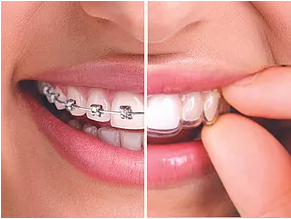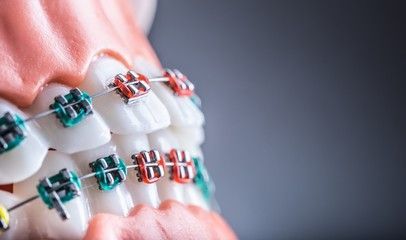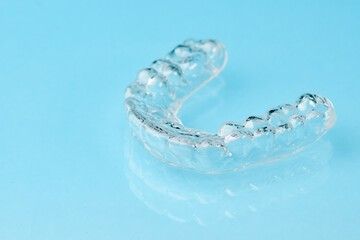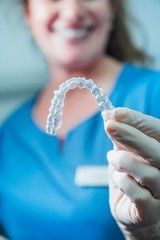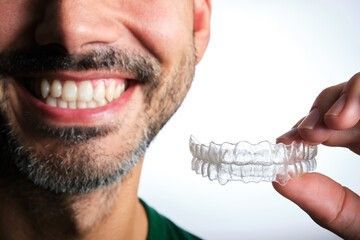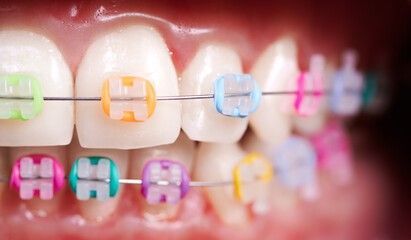Comparing Orthodontic Braces and Clear Aligners
Orthodontic Braces vs. Clear Aligners: A Comprehensive Comparison
Orthodontic treatment has come a long way in recent years, offering various options to correct dental misalignment and improve the aesthetics and functionality of one's smile. Two of the most prevalent methods for achieving these goals are orthodontic braces and clear aligners. Both approaches are effective in their own right, but they have distinct differences in terms of design, appearance, and functionality. Let’s delve into the distinctions between orthodontic braces and clear aligners, explore their respective advantages and disadvantages, and provide insights to help individuals make informed decisions regarding their orthodontic treatment.
I. Orthodontic Braces:
Orthodontic braces are a traditional and time-tested method for aligning and straightening teeth. They consist of small brackets that are attached to the teeth and connected by wires. These components work together to apply gradual pressure on the teeth, moving them into their desired positions over time. While traditional braces may evoke images of metal brackets and wires, advancements in orthodontic technology have introduced variations like ceramic braces that are less conspicuous.
Advantages of Braces:
- Effectiveness: Braces are highly effective for treating a wide range of orthodontic issues, including complex cases involving severe misalignment, bite problems, and overcrowding. They offer precise control over tooth movement, making them a reliable choice for comprehensive correction.
- Durability: Braces are known for their durability. Once installed, they remain in place for the duration of the treatment, ensuring consistent progress. This reliability can be particularly appealing for patients who value long-term stability.
- No Compliance Required: Braces do not rely on patient compliance to be effective. They work continuously, and wearers do not need to worry about adhering to a specific wear schedule. This is especially advantageous for younger patients or individuals with busy lifestyles.
- Cost: In many cases, braces tend to be more cost-effective than clear aligners. This can make them a more accessible option for individuals with budget constraints.
- Customization: Braces offer some degree of customization through the choice of colored bands. This personal touch can be particularly appealing to children and teenagers, allowing them to express their individuality.
Disadvantages of Braces:
- Visibility: The most prominent drawback of traditional metal braces is their visibility. The presence of metal brackets and wires on the teeth can be conspicuous, which may affect an individual's self-esteem or confidence.
- Discomfort: Some discomfort and soreness are common when braces are initially placed and during subsequent adjustments. Eating certain foods can also be challenging, as they may cause discomfort or damage to the braces.
- Oral Hygiene Challenges: Maintaining good oral hygiene can be more challenging with braces. Food particles can get trapped in the brackets and wires, leading to a higher risk of dental problems such as cavities and gum disease. This necessitates more meticulous cleaning routines.
- Diet Restrictions: Patients with braces are often advised to avoid certain foods that could damage or dislodge the braces, such as sticky candies, hard nuts, and chewing gum.
II. Clear Aligners:
Clear aligners, often associated with brands like ClearCorrect and Invisalign, represent a modern alternative to traditional braces. They are transparent, custom-fitted trays that fit snugly over the teeth, gently guiding them into their desired positions. Clear aligners have gained immense popularity in recent years due to their discreet appearance and convenience.
Advantages of Clear Aligners:
- Appearance: Perhaps the most significant advantage of clear aligners is their near-invisibility. They are made of transparent plastic, making them discreet and unobtrusive. This aesthetic advantage appeals to individuals who are self-conscious about their appearance during treatment.
- Comfort: Clear aligners are generally more comfortable than braces. They have smooth edges and do not involve wires or brackets that may cause irritation to the cheeks and lips. The absence of sharp components enhances overall comfort.
- Removability: Clear aligners are removable, allowing wearers to easily take them out for eating, drinking, and oral hygiene routines. This flexibility makes them highly convenient and minimizes dietary restrictions.
- No Dietary Restrictions: Since clear aligners can be removed when eating, there are no dietary restrictions. Patients can enjoy all foods without worrying about damaging their orthodontic appliance.
- Oral Hygiene: Maintaining good oral hygiene is generally easier with clear aligners. Since they can be removed for brushing and flossing, there is less risk of food particles getting trapped, reducing the likelihood of dental issues.
- Fewer Office Visits:
Clear aligners typically require fewer in-office visits compared to braces. This can be particularly convenient for individuals with busy schedules or those who live far from their orthodontist's office.
Disadvantages of Clear Aligners:
- Effectiveness for Complex Cases: Clear aligners may not be as effective as braces for severe orthodontic issues or complex bite problems. They are best suited for mild to moderate misalignment cases. Individuals with more complex issues may need to consider alternative treatments.
- Compliance: Successful treatment with clear aligners heavily depends on patient compliance. Patients must wear the aligners for at least 20-22 hours a day to achieve the desired results. Forgetting to wear them can slow down progress and lead to suboptimal outcomes.
- Staining of Aligners: Stains can occur on most clear aligner brands, with the exception of a few, like ClearCorrect. These stains typically result from consuming dark or strongly colored foods and beverages, such as curry, tomato sauce, coffee, tea, red wine, or dragon fruit, as well as from smoking
- Temporary Speech Impediments: Some individuals may experience temporary speech difficulties when they first start wearing clear aligners. The aligners may slightly affect speech due to their presence in the mouth, but most individuals adapt quickly.
- Not Suitable for Young Children: Clear aligners are typically not recommended for young children or individuals who may not have the discipline to wear them consistently. Braces are often a more suitable choice in these cases.
- Cost:
Clear aligner treatment can be more expensive than traditional braces, making them less accessible for some patients. It's essential to consider the cost aspect when choosing this option.
The choice between orthodontic braces and clear aligners is a significant decision that should be made after careful consideration of various factors, including the complexity of the orthodontic issue, personal preferences, comfort, cost, and lifestyle. Both methods have their advantages and disadvantages, and what works best for one person may not be the ideal choice for another.
Orthodontic braces, with their track record of effectiveness and durability, remain a reliable choice, particularly for complex orthodontic cases. They offer precise control over tooth movement and are generally more cost-effective. However, the visibility of braces and associated discomfort and oral hygiene challenges may deter some individuals.
Clear aligners, on the other hand, offer a discreet and comfortable alternative, making them highly appealing to those who prioritize aesthetics and convenience. They are removable, allow for easy oral hygiene, and have minimal dietary restrictions. However, their effectiveness may be limited in severe cases, and compliance is critical for successful treatment.
Ultimately, the best choice of orthodontic bracers or clear aligners depends on individual needs and circumstances. Consulting with an orthodontic specialist is essential to determine the most suitable treatment plan tailored to your specific orthodontic condition and personal preferences. Whichever option is chosen, the end goal is to achieve a healthy, beautiful smile that enhances both oral health and self-confidence. Orthodontic treatment is a transformative journey, and with the guidance of a skilled orthodontist, patients can look forward to the benefits of improved




